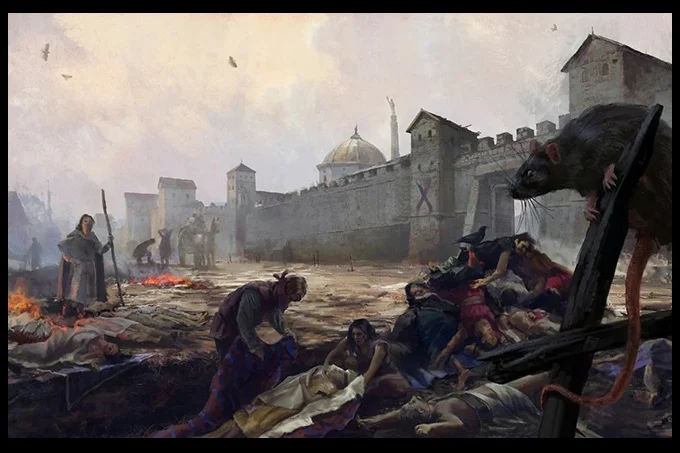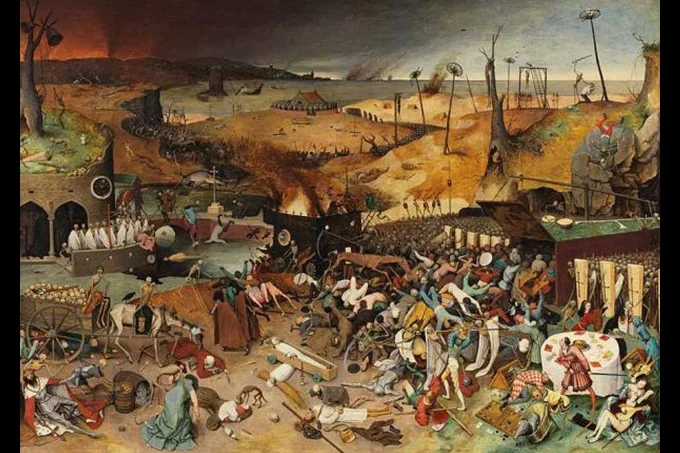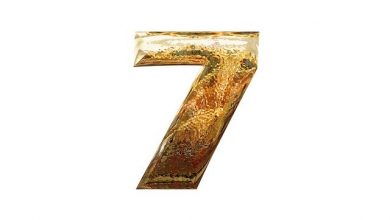Darkest year in the history of mankind: Global cataclysm of 536

Various sources unanimously call 536 the worst year in the entire history of mankind. The world was then bound by a long winter. Science calls this the “year of darkness”. The air temperature dropped sharply, everything was covered with a thick impenetrable fog that did not let the rays of the sun through.
A terrible climatic cataclysm affected the entire territory of Europe, the Middle East, as well as most of Asia and dominated there throughout the next decade. According to scientists, this decline in the development of mankind radically changed the entire course of history. But what caused this global climate cataclysm?
The phenomenon was described as the time when the sun dimmed and lost its light. An icy winter bound the Earth for a long time. Crop failures, famine, and pestilence swept over her. Humanity is on the verge of extinction. The chronicles of those times allow us to calculate terrible statistics: more than 80% of the entire earth’s population died. The survivors were forced to eat the dead. There were no birds or animals left, all were swallowed up by eternal darkness.
What is written in historical texts about the global climate cataclysm of 536
Medieval historian Michael McCormick stated that the year 536 was, if not the worst year in the entire history of mankind, then one of its worst periods for sure. John of Ephesus, a church leader, and historian of the 4th century wrote that the sun faded and darkness covered the Earth for a long year and a half.
The time between 535 and 536 was marked by a whole series of events in nature, which can be safely grouped under the name of “global climatic cataclysm” with catastrophic consequences. People stopped believing that the darkness would ever dissipate, and they would again see the bright sunlight.
This climate crisis triggered a chain of historical events that completely changed the entire course of human history. For example, the fall of the Roman Empire was directly related to this. After all, because of the “eternal winter” for a whole decade, severe famine raged all over the world due to crop failures. Also, exhausted, weak people became victims of various diseases. The most famous plague of that time is the Plague of Justinian. A terrible time claimed the lives of almost 100 million people across the Mediterranean.
Scientists believe that such a sharp cold snap provoked a mutation of the plague bacillus somewhere in the east. Researchers believe that it was China (what, again?!) or Tibet. Within a few years, the plague, along with the ubiquitous rats, reached Europe. Prior to that, it mowed down Persia, the Middle East, Byzantium.
Absolutely terrifying in its scale, the bubonic plague pandemic actually destroyed humanity. In Constantinople, according to the records of eyewitnesses of the events, several thousand people died daily. It got to the point that there was not only anywhere to bury the dead, but no one. The rare survivors simply dumped them into abandoned water towers. Truly terrible times..
Year of darkness and eternal winter

John of Ephesus is not the only chronicler who described this climatic cataclysm. The prominent Byzantine scholar and historian Procopius, who lived between 500 and 565 AD, also mentions the strange behavior of the main heavenly body in 536. He considered this an extremely bad omen, a harbinger of future tragic events. Procopius wrote that the sun was at that time more like the moon: no brightness and warmth. Another chronicler of the 6th century, Zacharias of Mytilini, devoted an entire section in his writings to this, which he entitled “The Dark Sun”.
These three pundits are not the only ones who mentioned the events of that era. Numerous texts by different historians from all over the Earth spoke about this. The phenomenon was described as the time when the sun dimmed and lost its light. An icy winter bound the Earth for a long time. Crop failures, famine, and pestilence swept over her. Humanity is on the verge of extinction. The chronicles of those times allow us to calculate terrible statistics: more than 80% of the entire earth’s population died. The survivors were forced to eat the dead. There were no birds or animals left, all were swallowed up by eternal darkness.
The catastrophic event struck not only Europe. America, Asia, Africa, and Australia have suffered. Written sources have not been preserved everywhere, but archaeological and geological data testify to global climate changes that have affected the world. For example, studies of tree trunks have shown that 536 AD was the coldest year in all subsequent years, up to this day.
What caused the darkness
So why did this all happen? Science does not give an absolutely accurate answer to this question. There are several theories. One of them says that these were the consequences of the fall of a huge asteroid or comet. Some believe that the cosmic body fell into the water. This explains the absence of a crater. Many geologists support this view. Research in this area includes the study of ice cores from Greenland. They testify that there really was a period of severe long winter. But how to explain the fact that not a single tsunami was recorded in this period, which would have happened if the asteroid had fallen into the ocean?
According to another version, a giant volcanic eruption is to blame. The volcanic ash could have caused the sun’s light to dim. According to one theory, the Krakatoa volcano, which is located between the islands of Java and Sumatra in Indonesia, is the main candidate. Even Pustaka Raja Purva (The Book of Ancient Kings) writes about this eruption. This manuscript is dated 416. Perhaps the inaccuracy of dating is due to the fact that this text was rewritten in 1869, and a mistake was made in time.
Where is the truth of the global cataclysm of 536?
As always – somewhere nearby. The global climatic cataclysm of 536 really took place. It has caused terrible consequences for people and the planet as a whole. Unfortunately, this period has not been sufficiently studied by scientists so far.
History textbooks are silent about this, and lectures are not given. Why is that? Humanity is probably simply afraid to admit that it does not have full power. What is a human life worth? She is fragile and fleeting. Whatever the level of technological progress, no matter how powerful people imagine themselves to be, they are by no means omnipotent. Before the forces and laws of nature, they are nothing.
Despite the difficulties that scientists face, they do not stop trying to understand the true causes of the events that occurred then. For example, just three years ago, researchers analyzed an ice core 72 meters long from a glacier in the Swiss Alps. After studying the sample, they came to the conclusion that an incredibly powerful volcanic eruption occurred in Iceland in 536. This caused a huge release into the atmosphere of substances such as sulfur, bismuth, and many others. Rising up, they formed a dense aerosol curtain that prevented the sun’s rays from illuminating and warming the Earth.
The consequences of the global climate cataclysm provoked a long-term crisis in the development of mankind. In fact, it was thrown far back. People were able to recover from these terrible events only by 640. Only during this period begins a slow recovery in all areas of life.
Read more about the different tragic periods of human history in more detail in our other article.




